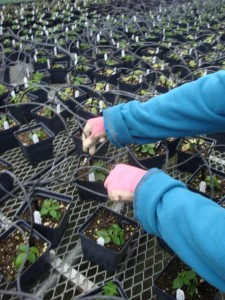by Briscoe White | Mar 31, 2010 | A Year in the Life.., Gardening, Growing |
I never thought our Year in the Life of a Garden would be raided by varmints, but it was last night. I cannot tell what it was that dug into a row of Pak Choi seedlings and buried some Arugula with their tailings. Damage was slight and what ever came rooting around did not find much of interest in our salad bed. My guess is that it was a raccoon or opossum attracted by the kelp meal fertilizer. Maybe it is better not to use fish fertilizer, as that will surely bring curious diggers.
Another little lesson we have learned in this spring garden in that using old seeds is risky. We sowed extra because the seeds were two years old, but none of the Spicy Mesculin Mix lettuce seeds germinated. Today I sowed fresh seed into that row and we should still have plenty of time to grow lettuce for cutting. I think next I will add a few herb plants around the borders, maybe a basil plant in the center. The logs surrounding the bed are impregnated with mushroom so we hope to harvest some interesting salad makings soon!
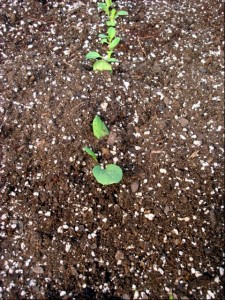
by Briscoe White | Mar 5, 2010 | A Year in the Life.., Flowers, Gardening, Growing, Herbs, Indoor Gardening |
We are finally able to report actual planting in our “A Year in the Life of a Garden” cold frame. Today we began by helping ourselves first with a salad garden. We are growing all the lettuce varieties offered by The Growers- Exchange.com: Wildfire, Arugula, All Greens, and Spicy Mesculin. All these annual plants will be finished by June, the lettuces wilt in the early summer heat.
The night temperatures restrict us to cool season plants for now, but as spring progresses we will add a basil plant along with any other herb plants useful in cooking. Our small gardens will produce plenty to eat from our veggies and culinary herbs.
We plan to add lots of flowering annuals to compliment our herb plants. Annual vines such as Moonflower and Hyacinth Bean will climb trellises and frame our beds. We like to grow old fashion favorites like celosia. We have several varieties: the brain varieties ‘Cramers Burgundy’ and ‘Lemon Lime’ always draw attention in the garden and as a cut flower. The plume type celosia plant has an entirely different flower and makes a great filler in bouquets. I am getting ahead of myself, celosia planting time is at least a month away.
For now we will grow salad plants and a little collards, kale, and broccoli too! Soon we will begin planting example gardens for our herb gardening kits. We hope to have pictures of all growth stages, which we can post on here on the blog. Herb gardening can look like weed gardening so our challenge will be to add flowering annuals for color and texture.
Next week we will have photos of the baby salad plants! We encourage you to follow our garden and makes suggestions if you like…
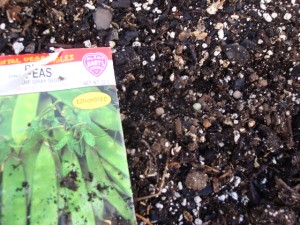
by Briscoe White | Mar 3, 2010 | Exploring, Flowers, Gardening, Growing, Life on the Farm, Wildlife |
Last fall when I first began this gardening blog, I reported on my seed collecting endeavors. Seed collecting is just the first step towards growing plants. All those ziplock bags full of seeds were carefully stored over the winter.
And now we are at the next step, which is to plant the seeds. I had collected seeds from various flowering annuals, some perennials, and a few herb plants. The goal is to plant wildflowers in all the conservation grasslands around the farm. Annual plants such as cosmos and Gomphrena will give color this year as the perennial natives establish themselves. To create a blooming prairie effect Dames Rocket and Shasta Daisies start blooming in spring and are followed by Coreopsis, Rudbeckia, Ratibida, and Echinacea in summer. A total of thirty types of flowers were planted
This year I am planting what I call “the grand finale”. Summer into fall will find Helianthus full of yellow sunflowers intermixed with the blue haze of wild Ageratum. I will have to wait until the following fall to see how it works, perennials must have time to establish. But for now we must wait and have faith that planting these seeds in the cold ground will sprout and grow in spring.
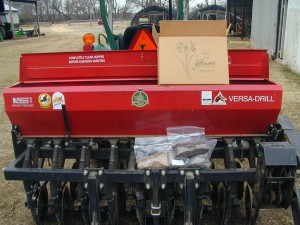
by Briscoe White | Feb 26, 2010 | Exploring, Gardening, Growing, Inspiration, Urban Gardening |
I had to pick up some greenhouse supplies today. In the warehouse park where our supplier is located is one of those little areas time seems to have forgotten. At the rear of the park are a few lots no one wanted some thirty years ago where the park was built out.
Open land just sitting there is an open invitation to many urban farmers. This unwanted couple of acres has been converted to individual plots. Like everything else, the gardens are frozen for now, but come spring this place will look like an Asian market for vegetables. Everybody seems to have their own plan; some grow all peppers or all greens while others grow a diverse garden.
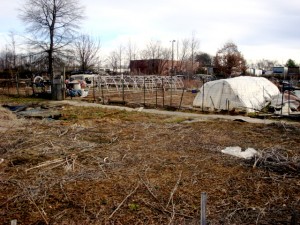
All the fences and cold frames are made of discarded materials. Most of the crops grown are annual plants, started from seed. This summer I will get a photo of the crops, but for now it is still too cold to garden.
by Kenan White | Feb 24, 2010 | A Year in the Life.., Basics, Gardening, Growing |
We have introduced our new garden we plan to grow in our cold frame beds and containers. In this garden we hope to recreate situations many home gardeners face. Limited space is our main focus and we will grow annual plants and various herb plants in combination to get the most out of a small space. This is an exciting venture for The Growers Exchange and we can already imagine the beds full of flowering annuals and all of our herb plants inter-planted. Vines will grow on trellises and melons will hang from the rafters. Will spring ever get here?
The other side of “ A Year in the Life of a Garden” theme is the outdoor garden surrounding the nursery office. A hedge was planted and a waterfall was built. As soon as the ground dries enough the beds will be cut out of the grass. Paths will be mulched and when the weather cooperates, plants will be planted. Here we plan to grow every plant we offer. By growing a test garden, we will be better able to know the ins and outs of the plants we sell. New plants will be trialed so we can see how they perform in all seasons. A photo record will be kept and journal entries made to our blog.
Follow the garden as it grows. We hope to begin planting the first seeds this week. Check back here to see the salad garden planted!
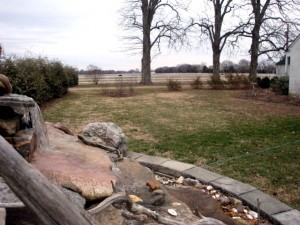
by Kenan White | Feb 22, 2010 | Basics, Gardening, Miscellaneous |
Every work place has certain jobs that no one looks forward to doing. But they must be done! One of ours here in the greenhouse is the annual event of putting the little water drip tubes in each pot. That doesn’t sound so bad until the number of drip tubes is considered. Each table has a thousand tubes, eight tables per greenhouse, as you can see it adds up. Broken ones have to be replaced, other than that every one is the same. It takes about a week to complete the task. If this is the kind of work you’d love to do in your greenhouse, you may want to opt for a dwarf wall greenhouse that would look amazing in your back garden.
The good news is that once the drip tube is inserted in the soil, we can feed and water that whole table with a switch. Uniform water in each pot is very important and impossible with hose watering. Once the spring crop is done, we will not face that many at once again until next year. The most important thing about the drip tubes is that they free us up to spend hands on time with the plants, not just watering all day. These little plants will be sent to zone 9-11 gardeners in just a few weeks. Plan your garden now while there is plenty of time, your plants can be ordered for the frost free date in your area.
